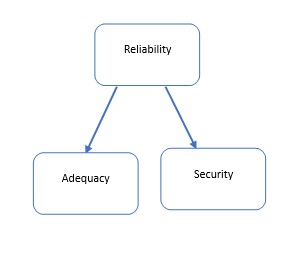
Reliability of power systems is essential for maintaining consistent electricity supply and minimizing disruptions. Our comprehensive study of the reliability of power systems focuses particularly on the distribution level, where up to 80-85% of reliability issues arise. By identifying system vulnerabilities and quantifying risks, this study provides valuable insights into improving the reliability of power systems.
Throughout the assessment, we evaluate key metrics that influence the reliability of power systems, such as fault tolerance, response to load fluctuations, and the impact of external factors like weather. Implementing the findings can significantly enhance the reliability of power systems, boosting both performance and consumer satisfaction.
What Are the Common Problems Due to Poor Power System Reliability?
Failure to address reliability issues can lead to:
- Overloading of the system
- Unreliable power supply to consumers
- Transient behavior in the systems
- Frequent power disruptions causing production halts, loss of revenue, and decreased profit
Reliability Assessment: Ensuring System Adequacy & Security
A reliability assessment evaluates the facility’s electrical system to identify vulnerabilities and potential outages. The main components include:
- Adequacy: Ensures the system meets customer load demands consistently.
- Security: Assesses the system’s ability to handle disruptions.

Reliability Indices: Key Metrics for Evaluation
Reliability indices are vital for assessing system performance. These include:
System Reliability Indices:
- Average Failure Rate (λ)
- Average Outage Duration (r)
- Annual Outage Duration (U)
Customer-Oriented Indices:
- System Average Interruption Frequency Index (SAIFI)
- System Average Interruption Duration Index (SAIDI)
- Customer Average Interruption Duration Index (CAIDI)
- Average Service Availability Index (ASAI)
- Average Service Un-Availability Index (ASUI)
Energy (Cost) Indices:
- Interrupted Energy Assessment Report (IEAR)
- Expected Energy Not Supplied (EENS)
- Expected Interruption Cost (ECOST)

Our Methodology for Power System Reliability Study
Our methodology incorporates several key steps to ensure accurate and effective analysis:
Step 1: Data Collection and Preparation
We gather data such as system topology, equipment specifications, historical outage records, and load profiles to establish a solid analysis foundation.
Step 2: Model Development
Utilizing ETAP’s modeling capabilities, we create detailed representations of power systems, including generators, transformers, transmission lines, distribution networks, and control systems.
Step 3: Analysis and Simulation
We conduct simulations to evaluate system performance under normal operating conditions and various contingencies, including equipment failures, load fluctuations, and transient disturbances.
Step 4: Reliability Metrics Evaluation
We apply industry-standard reliability metrics, such as SAIDI, SAIFI, and EENS, to quantify system reliability and availability.
Step 5: Mitigation Strategy Assessment
We assess the effectiveness of strategies such as equipment redundancy, load shedding, and grid automation to reduce risks and enhance resilience.
Step 6: Optimization Analysis
We use advanced optimization techniques to identify opportunities for system improvements, balancing capital investments, operational costs, and environmental impact.
Key Findings: Insights into Power System Reliability
Our study aims to uncover:
- Identification of vulnerable components prone to failure
- Impact quantification of factors like aging equipment, weather events, and human error
- Cost-effectiveness analysis of reliability enhancement measures
- Development of risk mitigation strategies tailored to your power system’s unique needs
Conclusion: Building a Resilient Power Infrastructure for the Future
As we move towards a sustainable energy future, prioritizing the reliability of power systems is crucial. By leveraging tools like ETAP, our study provides critical insights and recommendations to help stakeholders plan, execute, and maintain reliable and resilient power systems.
Find out more about how we can help with ISO 50001 EnMS
